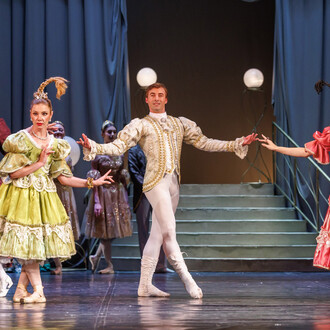Eridanus: the river constellation is Melissa McGill's most expansive gallery exhibition to date, encompassing work from 1998 to 2024. The exhibition illuminates the presence and interconnectedness of water and the cosmos throughout McGill's artistic engagement. The exhibition invites visitors to explore perspectives, mapping, water storytelling, constellations, and connections between past, present, and future, with a focus on community, meaningful shared experiences, and lasting positive impact. Engaging with water and organic materials in creative conversation and collaboration, the exhibition reflects the artist's environmental values in her studio work and her interventions in public spaces.
The exhibition title, Eridanus: the river constellation, references one of the largest constellations in the southern celestial hemisphere, represented as a river. It is one of the 48 constellations listed by the 2nd-century astronomer Ptolemy. Extending farthest in the sky from north to south, it later gave its Latin name to the Po River. Eridu, an ancient city in the extreme south of Babylonia, was sacred to the god Enki-Ea, ruler of the cosmic domain of the Abyss—a mythical conception of the freshwater reservoir below the Earth's surface. The title connects directly to the Po River, which runs through the centre of Turin and speaks of the connection between the cosmos and the earth by connecting waterways universally. The artist’s entire oeuvre traces these connections, from the acclaimed large-scale sculptural intervention Constellation (2015), installed around the ruins of Bannerman’s Castle on Pollepel Island in the Hudson River, New York, to the celebrated independent public art project Red regatta in Venice1.
After Red regatta, McGill, alarmed by the precarious state of our waterways, followed the VenetianLagoon’s watersbacktotheir source. The Po River, Italy’s longest river, is an ancient and enduring life force that flows into the Adriatic Sea, just south of the Venetian Lagoon. When friends and collaborators in Italy shared news of the Po River’s neglected and dying state due to climate change and exploitation, McGill began to envision how to support the Po itself througha creative tellingofits story. In July 2023 and in Summer 2024, she travelled to the Po’s source and delta, its beginning and its end. These deeply moving and engaging trips inspired a water storytelling project titled Lifeline, where the Po River is the guiding ancestral narrator.
This led to a deep dialogue with historical maps, specifically through collaboration with the State Archives of Turin. As archives, libraries, and collections are defined as much by what they include as by what they leave out, McGill reflects on what is recorded in these maps, what is expressed in the lines marking territories, calculations, names applied, and how nature and water are represented. What perspectives are represented? What is missing? Through McGill’s intervention, the technical and scientific representation of the Po River represented in archival maps, are combined with the artist’s unique combination of organic materials, connecting us once again with the environment these maps delineate. Organic indigo, kaolin clay, copper oxide, homemade soy milk, vinegar and water, give a new voice to the historical representations depicted in Eridano (number 1) (2024), carrying both the water’s creative expression and the reflections of the stars of the Eridanus Constellation.
Maps given to her upon arrival at Parco del Monviso while visiting the Po River source also act as a point of departure for McGill’s works, where she floods the detailed cartographic information of the original printed map with intricate flowing currents of homemade natural colour, evoking the spirited expression of the waters of the Po Source. These works bring the waterways to the surface, releasing their language over the labelled and calculated human one, free and flowing, as in Water story (po source) (2023).
In this age of climate fatigue, McGill shifts the narrative to offer a different story of our waterways, aiming to empower and illuminate the river’s enduring wisdom in this age of climate change and explore new perspectives while learning from the past.
Included in the exhibition are two sculptural works made of inky blown black glass, the cosmic Here and now (2004) and Between the two, ll (2016), an installation mapping negative spaces between Bernini’s sculpture of Apollo and Daphne, which enter into a dialogue of reflections with everything around them.
Guided by waterways and the cosmos for over 25 years, Melissa McGill explores mysterious and extraordinary natural places and perspectives, offering new ways to navigate some of the urgent and relevant environmental topics of our challenging times. Each of her projects takes the form of a constellation – of individuals, organizations and elements – coming together to create new illuminated stories in reciprocity with nature.
The exhibition will be accompanied by a catalogue of the same name, Eridanus: the river constellation. The publication, designed by the New York-based studio Waterhouse Cifuentes, includes an essay by Kathryn Weir dedicated to the artist’s work, along with an indepth conversation about McGill’s artistic and research practice. It also features an essay by Stefano Benedetto, Director of the State Archive of Turin, which links the preservation of historical archives with the contemporaneity of McGill’s research. The artist’s narrative voice tells, in the first person, the genesis, emotions, and behind-the-scenes process of the ongoing research dedicated to water and the cosmos, presented to the public for the first time at the exhibition in Turin.
Notes
1 Red regatta was presented during the inaugural week of the 58th International Art Exhibition, La Biennale di Venezia, in May 2019 and activated Venice’s lagoon and canals with four large-scale regattas of traditional vela al terzo sailboats hoisted with hand-painted red sails in 2019. It was presented in collaboration with Associazione Vela al Terzo, curated by Chiara Spangaro, with project manager Marcella Ferrari, co-organized by Magazzino Italian Art, with support from Mazzoleni, along with more than 250 Venetian local partners.















